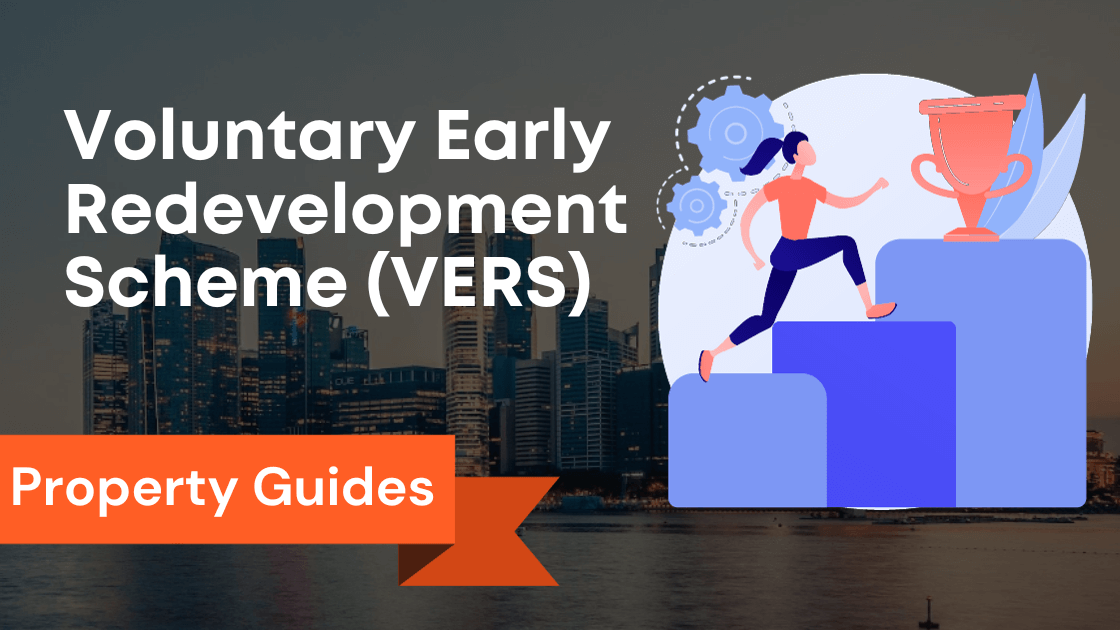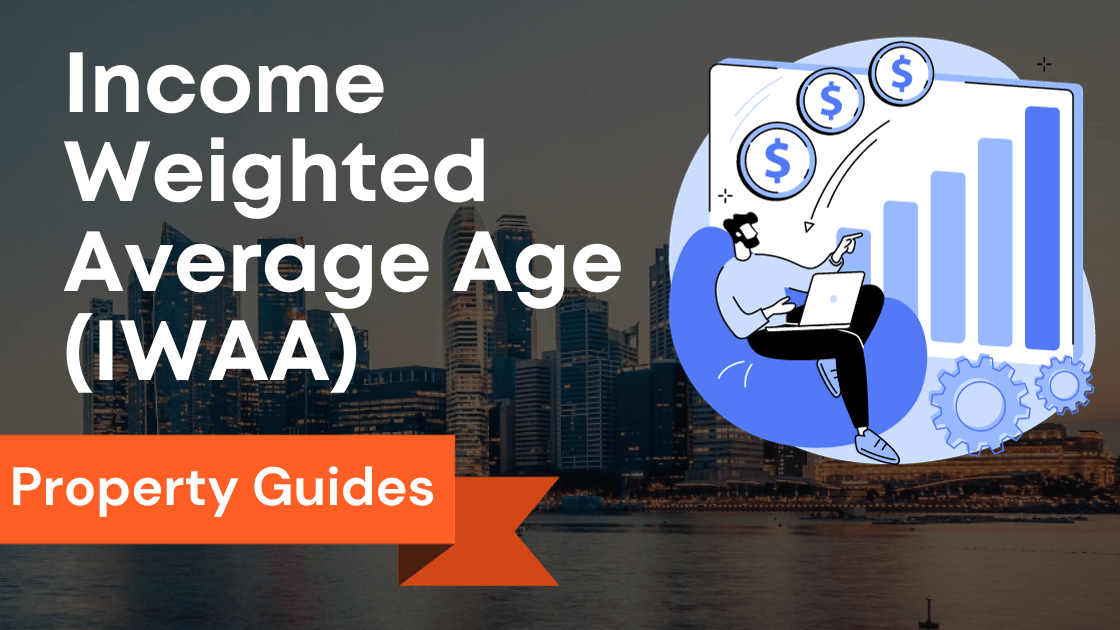
When it comes to buying property in Singapore, it is essential to have a clear understanding of the Mortgage Servicing Ratio (MSR) and its importance in the country’s property market.
The MSR is a measure that determines the portion of a borrower’s gross monthly income that goes towards repaying the monthly debt obligations, specifically the mortgage.
In this article, we will delve into the details of MSR, its calculation, and its significance in the context of property loans in Singapore.
Key Takeaways
- MSR Definition: MSR assesses a borrower’s ability to repay a home loan by calculating the percentage of their gross monthly income used for housing loan repayments.
- MSR Calculation: Calculate MSR by dividing monthly mortgage payments by gross monthly income, then multiply by 100. MSR is expressed as a percentage.
- Importance of MSR: MSR prevents borrowers from taking on loans they can’t afford and helps lenders assess lending risk. It’s vital in Singapore’s property market.
- MSR for HDB: For HDB flats, MSR is capped at 30% of gross monthly income to ensure borrowers don’t overextend financially.
- MSR for Bank Loans: Bank loans for private properties have an MSR cap of 35% to maintain property market stability.
- MSR vs. TDSR: MSR is specific to housing loans, while Total Debt Servicing Ratio (TDSR) considers all debts, including credit cards and car loans.
- Purpose of MSR: MSR ensures responsible borrowing, prevents excessive debt, and helps borrowers make informed decisions.
- MAS and MSR: The Monetary Authority of Singapore (MAS) regulates MSR, safeguarding the property market’s stability.
- Loan Eligibility: MSR impacts loan eligibility, with limits on loan tenure and maximum loan amounts.
- Role of HDB Loans: HDB loans have their criteria, including TDSR, which considers all debts, not just housing loans.
Introduction to Mortgage Servicing Ratio (MSR) Property in Singapore
In the context of Singapore’s property market, Mortgage Servicing Ratio (MSR) is an important metric to consider when applying for a home loan.
MSR is used to assess the borrower’s ability to repay the loan based on their gross monthly income and monthly loan repayments.
It is a ratio that calculates the percentage of a borrower’s income that is used to service their monthly housing loan repayments.
The Mortgage Servicing Ratio or MSR is an important financial calculation used in the mortgage industry.
This ratio is used to determine the borrower’s ability to repay their mortgage loan based on their income and expenses.
In order to pass both criteria – msr, criteria – msr calculations followed by the borrower’s monthly mortgage payment should not exceed a certain percentage of their gross monthly income.
This calculation ensures that the borrower’s income is sufficient to meet their debt obligations.
Additionally, the MSR calculations followed by TDSR Total Debt Servicing Ratio.
The TDSR calculation takes into account the borrower’s total debt payments, including credit card payments, car loans, and other loan obligations, in addition to the mortgage payment.
This comprehensive calculation provides a more accurate assessment of the borrower’s financial situation and ability to manage their debt.
Lenders use these criteria and calculations to evaluate the risk of lending to a borrower and to ensure that the borrower has a reasonable ability to repay the loan.
pass the criteria for msr, tdsr is currently, income for msr calculations, calculations followed by tdsr calculations money you can borrow,hdb flat or an ec, limit is capped at 30 hdb or on the resale,hdb or bank loan, divided by their total, borrow for a home loan,ec must pass both criteria
Understanding Mortgage Servicing Ratio (MSR)
The Mortgage Servicing Ratio (MSR) is calculated by taking the borrower’s monthly loan repayment and dividing it by their gross monthly income.
The resulting figure is then multiplied by 100 to get the MSR percentage.
This calculation helps lenders determine whether the borrower has the financial capacity to handle the monthly repayments of the home loan.
The MSR is important because it provides a safeguard for borrowers, ensuring that they do not overextend themselves financially by taking on a home loan that they cannot afford.
It also helps financial institutions assess the risk of lending to a borrower and determine an appropriate loan amount.
The Mortgage Servicing Ratio (MSR) is a key factor that lenders consider when evaluating loan applications for property purchases.
It is calculated by dividing the monthly mortgage repayments by the borrower’s gross monthly income.
The resulting figure is expressed as a percentage, indicating the proportion of the borrower’s income dedicated to servicing the mortgage.
For example, if a borrower has a monthly salary of $5,000 and the monthly mortgage payments amount to $1,500, the MSR would be 30% ($1,500 / $5,000 * 100%).
This means that 30% of the borrower’s monthly income goes towards repaying the mortgage.
Importance of MSR in Singapore’s property market
MSR plays a vital role in Singapore’s property market, especially when it comes to public housing and executive condominiums (ECs).
The Housing Development Board (HDB) and financial institutions use the MSR to limit the amount of loan a borrower can take when purchasing a HDB flat or EC.
For HDB-issued loans, the MSR cap is set at 30%, which means that the monthly housing loan repayment cannot exceed 30% of the borrower’s gross monthly income.
This rule ensures that individuals do not stretch their finances beyond their means when buying a HDB flat.
In the case of bank loans for private properties and ECs, the MSR cap is set at 35%.
This limit aims to prevent borrowers from taking on excessive debt and helps to maintain stability in the property market.
It is important to note that MSR is different from Total Debt Servicing Ratio (TDSR), which takes into account all debt obligations, including credit card bills, car loans, and student loans.
While TDSR considers all forms of debt, MSR is specific to housing loans.
In conclusion, Mortgage Servicing Ratio (MSR) is an essential factor to consider when applying for a home loan in Singapore.
It helps borrowers determine the maximum loan amount they can afford based on their gross monthly income and monthly loan repayments.
By adhering to the MSR limits, borrowers can ensure they make sound financial decisions when purchasing property in Singapore.
The MSR plays a crucial role in Singapore’s property market as it helps ensure that borrowers are not overburdened by mortgage obligations.
By setting a limit on how much of their income can be used to service mortgage payments, the MSR acts as a safeguard against excessive borrowing and potential financial strain.
The introduction of MSR in 2013 by the Monetary Authority of Singapore (MAS) was a response to concerns about rising property prices and the level of household debt.
It aimed to promote responsible borrowing and prevent individuals from taking on larger loan obligations than they could afford.
Mortgage lenders, such as banks and other financial institutions, are required to adhere to the MSR rules set by MAS when offering loans to individuals purchasing residential properties in Singapore.
Difference Between MSR and TDSR | Interest Rate of Total Debt Servicing Ratio TDSR and MSR

Definition and calculation of MSR
The Mortgage Servicing Ratio (MSR) is a financial calculation used in Singapore to assess the affordability of purchasing a Housing and Development Board (HDB) flat.
The MSR is calculated by taking the borrower’s total monthly debt repayment obligations and dividing it by their gross monthly income.
The total monthly debt repayment includes the monthly home loan repayment, as well as any other loan repayments such as car loans or renovation loans.
The MSR calculation has certain restrictions.
For HDB flats, the MSR limit is set at 30%, meaning that a borrower’s total monthly debt repayment cannot exceed 30% of their gross monthly income.
This is to ensure that borrowers do not overextend themselves financially and are able to afford their housing loans.
The Mortgage Servicing Ratio (MSR) focuses solely on the portion of the borrower’s income dedicated to servicing the mortgage.
It does not take into account other debt obligations, such as credit card loans or car loans.
The calculation of MSR is based on the borrower’s gross monthly income and the monthly mortgage payments.
Definition and calculation of TDSR
The Total Debt Servicing Ratio (TDSR) is another financial calculation used in Singapore to assess the affordability of borrowing money, not just for purchasing an HDB flat, but for any type of loan application.
The TDSR is calculated by taking the borrower’s total monthly debt obligations, including the monthly mortgage repayment, and dividing it by their gross monthly income.
The total monthly debt obligations include not just loan repayments, but also other monthly debt repayments such as credit card bills.
The Total Debt Servicing Ratio (TDSR), on the other hand, considers all of the borrower’s debt obligations.
This includes not only mortgage repayments but also other credit card debts, personal loans, and car loans.
TDSR is calculated by dividing the borrower’s total monthly debt obligations by their gross monthly income.
The TDSR calculation has a slightly different calculation from the MSR.
The TDSR takes into account the loan tenure and applies a prescribed interest rate to the monthly mortgage repayment to ensure that borrowers can still afford their loans even if interest rates were to increase in the future.
The TDSR limit is set at 60%, meaning that a borrower’s total monthly debt obligations cannot exceed 60% of their gross monthly income.
Key differences between MSR and TDSR
The key differences between MSR and TDSR lie in their purposes and the types of loans they are used for.
MSR is specifically used for assessing the affordability of purchasing an HDB flat, while TDSR is used for any type of loan application.
The MSR focuses on the borrower’s monthly home loan repayments and restricts the total monthly debt repayment to 30% of their gross monthly income.
On the other hand, the TDSR takes into account all types of monthly debt obligations and restricts the total monthly debt repayment to 60% of the borrower’s gross monthly income.
In terms of loan application, MSR is applicable only for HDB loans, while TDSR applies to all types of loans, including bank loans.
Additionally, the TDSR considers factors such as loan tenure, interest rates, and outstanding loans, whereas the MSR primarily focuses on the monthly mortgage repayments.
It is important for loan applicants to understand both the MSR and TDSR calculations and limits to ensure that they adhere to the appropriate guidelines when applying for a loan in Singapore.
By being aware of these ratios and managing their finances accordingly, borrowers can make informed decisions about their property purchases and loan applications.
While both MSR and TDSR are measures used in evaluating loan applications, they differ in their scope and calculations.
MSR focuses solely on mortgage repayments, while TDSR takes into account all debt obligations.
By considering a broader range of debts, TDSR provides lenders with a more comprehensive view of the borrower’s overall financial health.
MSR Rules and MSR Limit in Singapore – Bank Loan / Home Loan / HDB Loan

In Singapore, the government has implemented the Mortgage Servicing Ratio (MSR) as a measure to ensure that households do not become overly burdened by their housing loan repayments.
The MSR is applicable for both Housing Development Board (HDB) flats and bank loans.
Applicability of MSR for HDB flats
For HDB flats and Executive Condominiums (ECs), the MSR applies to borrowers who use their Central Provident Fund (CPF) to finance their home purchase.
The loan period cannot exceed 25 years, and the MSR is set at a maximum of 30% of the borrower’s gross monthly income.
This means that the total housing loan repayments, including interest, cannot exceed 30% of the borrower’s income.
It is important to note that certain income products, such as bonuses and rental income, cannot be included in the calculation of the borrower’s income for the purpose of MSR.
Additionally, only certain eligible loans are considered for the MSR calculation, such as HDB loans or bank loans taken for the purchase of HDB flats.
The MSR rules apply to borrowers seeking loans for HDB flats in Singapore.
HDB, which stands for Housing and Development Board, is the government body responsible for public housing in the country.
When purchasing HDB flats, potential buyers need to ensure that they meet the MSR requirements set by MAS.
Applicability of MSR for bank loans
For bank loans, the MSR is applicable for financial institutions that provide housing loans to borrowers.
The MSR calculation takes into account the borrower’s gross monthly income, the loan package interest rate, and the loan period.
The maximum home loan granted by the bank is determined by the MSR, ensuring that borrowers’ monthly mortgage obligations do not exceed the specified limit.
In addition to HDB loans, MSR is also applicable to borrowers seeking bank-issued loans for private residential properties.
Whether it is an apartment, condominium, or landed property, individuals must comply with MSR restrictions to secure a bank loan for their desired property.
In addition to the MSR, borrowers also need to adhere to the Total Debt Servicing Ratio (TDSR) rules set by the Monetary Authority of Singapore.
The TDSR takes into account all the borrower’s financial obligations, including credit card debts, personal loans, car loans, and outstanding non-mortgage loans.
The TDSR limit is set at 60% of the borrower’s gross monthly income.
MSR limitations and maximum MSR limit
The MSR is capped at 30% to prevent borrowers from taking on excessive debt and to ensure that they have sufficient income to meet their other financial obligations.
However, there are exemptions to the MSR rule in certain cases, such as when the cost of the property is deemed to be too expensive, and the borrower has a higher income or less financial obligations.
MSR rules dictate a maximum limit on how much borrowers can allocate from their monthly household income to repay the mortgage.
The MSR limit is capped at 30%, meaning that borrowers cannot dedicate more than 30% of their monthly income to mortgage repayments.
It is also important to note that the MSR calculation is based on the assumption of an interest rate, known as the MSR interest rate.
This is to account for potential increases in interest rates in the future.
However, the actual interest rates offered by banks may be lower, resulting in more affordable monthly mortgage obligations for borrowers.
Overall, the MSR plays a crucial role in maintaining the financial stability of households in Singapore by ensuring that they do not take on excessive debt.
It is important for borrowers to understand the MSR rules and limitations to make informed decisions when seeking a home loan.
TDSR Rules and Considerations

Understanding Total Debt Servicing Ratio (TDSR)
If you are planning to buy a HDB flat or any property in Singapore, it is important to familiarize yourself with the Total Debt Servicing Ratio (TDSR) rules.
The TDSR is a measure implemented by the Monetary Authority of Singapore (MAS) to ensure that borrowers can manage their debt obligations.
Total Debt Servicing Ratio (TDSR) is a measure of a borrower’s ability to fulfill all debt obligations, including mortgage repayments, credit card loans, and other personal debts.
TDSR takes into account a wider range of financial commitments, providing a comprehensive assessment of an individual’s debt management capability.
The TDSR takes into account all debts secured by property, including your mortgage loan, car loan, and any other outstanding loans.
The aim is to prevent borrowers from over-extending themselves financially and ensure responsible lending practices.
To meet the TDSR requirements, your total debt obligations should not exceed 60% of your monthly income.
This means that if you have a monthly income of $5,000, your total debt obligations, including your mortgage payments, should not exceed $3,000.
Calculating your TDSR is relatively straightforward.
You sum up all your monthly debt payments and divide it by your gross monthly income.
This will give you a percentage which should ideally be below 60%.
It’s important to note that the TDSR assessment applies to all types of loans, including bank loans and HDB loans.
If you are buying a HDB flat, the TDSR rules may impact your loan eligibility.
TDSR rules and determining loan eligibility
When it comes to determining loan eligibility, both the TDSR and Mortgage Servicing Ratio (MSR) are taken into consideration.
While the TDSR focuses on your overall debt obligations, the MSR specifically looks at your ability to service your mortgage loan.
Similar to MSR, TDSR also has specific rules and regulations for loan eligibility.
The MAS has set a TDSR threshold of 60%, meaning that borrowers cannot allocate more than 60% of their gross monthly income towards all debt repayments.
This ensures that borrowers have sufficient income to cover their financial commitments and maintain a reasonable level of financial stability.
The key difference between the two is that the MSR only applies to HDB flats and Executive Condominiums (ECs).
The MSR requirement states that your monthly mortgage payment should not exceed 30% of your gross monthly income.
To give you an example, if your monthly income is $5,000, your maximum monthly mortgage payment should not exceed $1,500.
Banks and financial institutions are required to adhere to both TDSR and MSR rules when assessing loan applications for HDB flats, BTO flats, and flat sales.
These rules are in place to ensure that borrowers can comfortably manage their housing purchases without being burdened by excessive debt.
If your TDSR or MSR calculations indicate that you may have too much debt, it is worth considering alternative financing options.
This could involve reducing your loan amount, seeking a lower interest rate, or exploring other suitable options that align with your financial goals.
In conclusion, understanding the TDSR rules and calculations is crucial when planning to buy a HDB flat or any property in Singapore.
By ensuring that your debt obligations do not exceed the stipulated limits, you can make informed decisions about your home loan and avoid potential financial strain in the future.
Impact of MSR on Buying a HDB Flat | MSR Calculations

MSR calculations and its effect on loan eligibility
Purchasing a Housing & Development Board (HDB) flat in Singapore comes with certain financial considerations, one of which is the Mortgage Servicing Ratio (MSR).
The MSR is a calculation that determines the maximum percentage of a borrower’s gross monthly income that can be used to service mortgage repayment.
The MSR is an important factor that affects loan eligibility for individuals looking to buy a HDB flat.
It takes into account various factors such as loan-to-value ratio, income, and loan limitations.
It is essential for buyers to understand MSR limits as it determines the maximum loan tenure and eligibility they can obtain.
For example, if the MSR limit is set at 30% and an individual’s gross monthly income is $5,000, they can only use a maximum of $1,500 towards their monthly loan repayment.
This calculation includes all property-related loans, such as home loans or personal loans taken for the purchase of the HDB flat.
For individuals looking to purchase an HDB or EC, understanding MSR is crucial as it directly impacts loan eligibility.
MSR limits the amount individuals can borrow based on their gross monthly income.
By restricting the percentage of income that can be allocated to mortgage repayments, MSR ensures that borrowers do not take on excessive loans that they may struggle to repay.
EC in Singapore is a popular housing option for middle-income families.
ECs are a hybrid of public and private housing, offering the affordability of HDB flats with the amenities and exclusivity of private condos.
However, eligibility for ECs is subject to certain criteria, such as citizenship requirements and household income limits.
The maximum monthly household income to purchase an EC is less than or equal to $16,000.
One advantage of ECs over HDB flats is that they can be sold in the open market after the Minimum Occupation Period (MOP) of five years, providing homeowners with potential profits.
When it comes to financing, buyers can choose between obtaining a housing loan from either HDB or bank.
Many prefer HDB loans due to their competitive interest rates and flexible repayment options, such as stretching the mortgage repayments to 30 years.
However, it is advisable to carefully consider one’s financial situation and assess the pros and cons of both HDB and bank loans before making a decision.
It is worth noting that the maximum home loan tenure in Singapore is typically 30 years.
However, the actual loan tenor is dependent on factors such as the buyer’s age and income stability.
Lenders will take these factors into consideration when determining the loan tenor for the borrower.
Monetary Authority of Singapore and its role in MSR
The Monetary Authority of Singapore (MAS) plays a crucial role in regulating the MSR.
The MAS sets rules and guidelines that financial institutions must adhere to when granting loans for the purchase of an HDB flat.
However, it is important to note that the MSR does not apply to the purchase of an HDB flat with a Housing Loan from the HDB itself.
The HDB loan has its own set of rules and criteria, including the Total Debt Servicing Ratio (TDSR), which takes into account all debt obligations of an individual.
The TDSR and MSR are similar in that they both assess the borrower’s ability to service their loans.
However, the TDSR includes all debts, not just property-related loans.
The borrower’s total debt obligations, including car loans, credit card debts, and personal loans, are taken into consideration when calculating the TDSR.
Understanding the MSR and its impact on loan eligibility is crucial for anyone looking to purchase a HDB flat in Singapore.
It is important to consider the MSR limit, as it determines the maximum loan eligibility and tenure.
Additionally, being aware of the role of the MAS in regulating the MSR and understanding the difference between MSR and TDSR will help potential buyers navigate the loan application process more effectively.
The Monetary Authority of Singapore (MAS) is responsible for implementing and enforcing the MSR rules in collaboration with various financial institutions.
The MAS plays a vital role in safeguarding the stability of Singapore’s property market and preventing the overextension of borrowers.
The Mortgage Servicing Ratio (MSR) is a critical factor in Singapore’s property market.
It ensures responsible borrowing and protects both borrowers and lenders from excessive financial strain.
By understanding MSR and its implications, potential property buyers can make informed decisions and secure loans that align with their financial capabilities.
Conclusion
Key concerns and considerations with MSR in Singapore
When it comes to the Mortgage Servicing Ratio (MSR) in Singapore, there are several key concerns and considerations that potential homeowners need to keep in mind. Here are a few to consider:
- Concessionary loans: If you are planning to apply for a concessionary loan offered by the government, be aware that there might be stricter MSR limits imposed. These limits are in place to ensure that borrowers do not exceed their repayment capacity.
- Borrowing by households: If you are part of a household with multiple borrowers, it’s important to understand that the MSR is calculated based on the borrower with the highest income. This means that even if you have a low income, you may still be subject to MSR restrictions if another borrower in your household has a higher income.
- First-time resale flat buyers: For first-time resale flat buyers, the MSR restrictions are slightly more relaxed. The MSR limit is set at 30% for these buyers, allowing for a slightly higher loan quantum compared to other types of properties.
- Freelance website developer: For individuals who are self-employed or work on a freelance basis, it can be more challenging to meet the MSR requirements. Lenders may take a more conservative approach when assessing the income stability of self-employed individuals, which could impact the loan amount they can qualify for.
- Debt reduction plan: If you have outstanding debts, it’s important to consider how they might affect your MSR. Lenders typically factor in your existing debt obligations when determining your MSR limit, so reducing your debts can help increase your borrowing capacity.
- Official salary: When determining your MSR limit, lenders typically rely on your official salary as stated in your payslips. If you have additional sources of income, such as rental income or bonuses, it’s important to discuss these with your lender to see if they can be included in the calculation.
Tips for navigating MSR restrictions effectively
While MSR restrictions can present challenges for potential homebuyers in Singapore, there are several tips that can help navigate these restrictions effectively:
- Financial planning: Before embarking on your homebuying journey, it’s crucial to engage in comprehensive financial planning. This includes assessing your income, expenses, and existing debts, as well as understanding your long-term financial goals.
- Understanding mortgage terms: Take the time to thoroughly understand the terms and conditions of your mortgage loan, including the interest rate, loan tenure, and repayment schedule. This will help you make informed decisions and avoid any surprises down the line.
- Consult a financial advisor: Seek guidance from a qualified financial advisor who can provide personalized recommendations based on your unique financial situation and goals. They can help you navigate the MSR restrictions and offer strategies to optimize your borrowing capacity.
- Plan for the minimum occupation period: If you are purchasing a Housing Development Board (HDB) flat or an Executive Condominium (EC), be aware of the minimum occupation period (MOP) that you are required to fulfill. Selling the property before the MOP is completed could result in penalties.
- Review your employment contract: If you are on a fixed-term employment contract, consider the potential impact on your borrowing capacity. Lenders may have stricter requirements for borrowers on fixed-term contracts, so it’s important to assess the stability of your income.
By considering these key concerns and following these tips, potential homebuyers in Singapore can navigate the MSR restrictions effectively and make informed decisions regarding their home purchase. Remember, it’s important to engage in thorough financial planning and consult with experts to ensure a successful and sustainable homeownership journey.
Frequently Asked Questions
What is mortgage servicing ratio (msr)?
Mortgage Servicing Ratio (MSR) refers to the portion of your total gross monthly income that can be spent on mortgage repayments for residential property loans. It helps to determine how much you can borrow.
How is mortgage servicing ratio calculated?
Mortgage servicing ratio is calculated by dividing your total monthly mortgage obligations by your total gross monthly income. The result is then multiplied by 100 to get a percentage.
What is the maximum mortgage servicing ratio?
The maximum mortgage servicing ratio allowed in Singapore is currently 30% for HDB flats and ECs (Executive Condominiums).
How does mortgage servicing ratio affect loan approval?
In order to obtain a loan for purchasing a property, you must pass the criteria for mortgage servicing ratio. Lenders assess your ability to make mortgage payments based on this ratio.
What is the total debt servicing ratio?
The Total Debt Servicing Ratio (TDSR) is another criterion used by lenders to determine if you can afford a loan. It takes into account all your monthly debt obligations, including loans and credit card payments.
How is the total debt servicing ratio calculated?
The Total Debt Servicing Ratio is calculated by dividing your total monthly debt obligations by your total gross monthly income. This percentage is multiplied by 100 to get the TDSR.
Can I pass both the mortgage servicing ratio and total debt servicing ratio?
Yes, you must pass both criteria – mortgage servicing ratio and total debt servicing ratio calculations – in order to qualify for a loan.
What factors are considered in mortgage servicing ratio calculations?
The factors considered for mortgage servicing ratio calculations include your total gross monthly income, loan quantum, monthly loan payments, and other financial obligations.
Are there any concessions for mortgage servicing ratio?
Yes, there are concessions for certain types of properties. For example, HDB flats and ECs in Singapore have a concessionary interest rate for mortgage servicing ratio calculations.
Can joint borrowers combine their incomes for mortgage servicing ratio calculations?
Yes, joint borrowers can combine their incomes to determine the mortgage servicing ratio. This allows for a higher loan limit based on the combined income.












